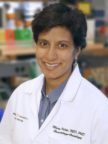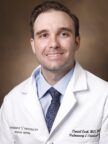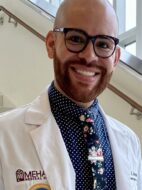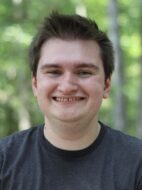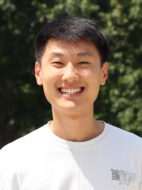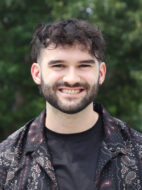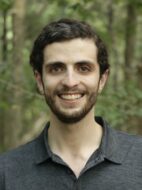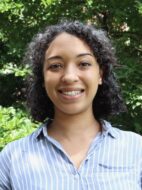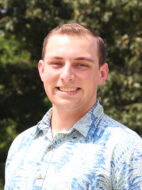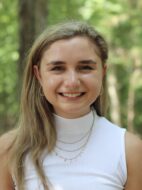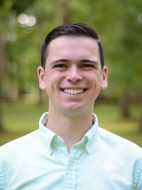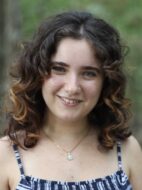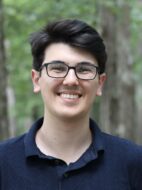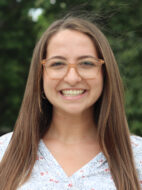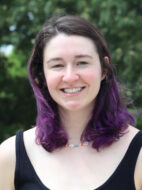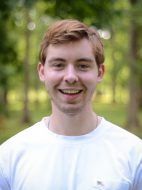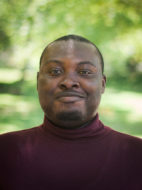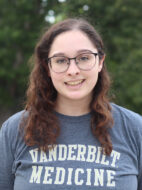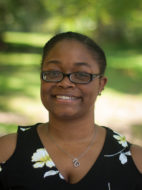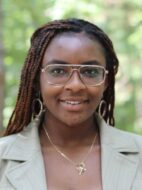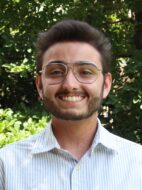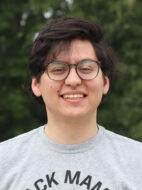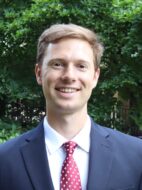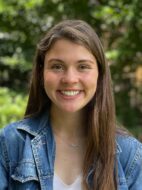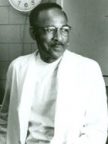Stahlman-Thomas College
Stahlman-Thomas Advising College Faculty Leaders
Assistant Professor, Medicine
Assistant Professor, Pathology, Microbiology, and Immunology
Professor, Pathology, Microbiology and Immunology
Elizabeth and John Shapiro Chair
Professor, Medicine
Professor, Pharmacology
Professor, Cell and Developmental Biology
Stahlman-Thomas Associate College Advisors
Stahlman-Thomas Members
Stahlman-Thomas Advising College Namesake
Dr. Mildred Stahlman was born in Nashville, Tennessee. Her father, James Geddes Stahlman, was president and publisher of Nashville’s afternoon newspaper, the Nashville Banner. When she was approximately age 11, Stahlman was given a microscope and soon after determined she would be a doctor when she grew up. Stahlman attended Ward-Belmont, a Nashville finishing school for young ladies, then entered Vanderbilt Medical School in 1943. She graduated in 1946 and served as an intern at Lakeside Hospital in Cleveland, as a pediatric intern at Children’s Hospital in Boston, as assistant resident on the pediatric service at Vanderbilt, as an exchange fellow at the Royal Caroline Institute in Stockholm, and as a cardiac resident at La Rabida Sanitarium in Chicago. She became an instructor in Pediatrics at Vanderbilt in 1951. Two early experiences helped determine the course of Stahlman’s career. The first was a fellowship at the famed Karolinska Institute in Stockholm, Sweden, where she studied pediatric cardiology. It was there, she said, that she became hook on the care of newborn infants. The second pivotal experience was her relationship with Elliott V. Newman, M.D., founder of Vanderbilt’s General Clinical Research Center. Newman persuaded her to do cardiopulmonary research in his division. By 1951, Stahlman was working as an instructor in pediatrics at Vanderbilt and in 1954 received a small grant from the National Institutes of Health to study hyaline membrane disease.
Her initial research was in pediatric cardiology, but her interest in the respiratory problems of premature newborns along with the NIH grant led Stahlman to establish the first modern neonatal intensive care unit in the world. She started Vanderbilt’s Neonatology Fellowship Training Program and has helped train more than 80 postdoctoral fellows from about 20 countries in research and high-risk newborn care. She was also involved in initiating the regionalization program of high-risk newborn care in Tennessee in 1973. Stahlman is a member of the Institute of Medicine and is the Virginia Apgar Award winner from the American Academy of Pediatrics and the John Howland Medal from the American Pediatric Society. She resides on her farm in Brentwood Tennessee, but still remains active in research and consulting.
Sources:
1. The Vanderbilt Reporter: from “Stahlman Named Distinguished Alumna” by Ann Marie Deer Owens, The Reporter, Vanderbilt Medical Center, October 15, 2004 and “Intensive Caring,” by Bill Snyder, The Reporter, Vanderbilt Medical Center, February 4, 2005.
2. http://www.nlm.nih.gov/locallegends/Biographies/Stahlman_Mildred.html
3. From Wikipedia: Mildred T. Stahlman is a professor of pediatrics and pathology at Vanderbilt University. A 1943 graduate of Vanderbilt’s College of Arts and Science, she earned her M.D. at Vanderbilt in 1946 and has spent her entire career at the university’s medical center.[1]
Stahlman started the university’s first newborn intensive care unit, in order to use respiratory therapy for infants with damaged lungs. In addition, she has researched methods to prevent and treat disease, developed overseas fellowship exchange programs, and initiated the Angel Transport mobile intensive-care unit for newborns.[1] She is an author on more than 100 peer-reviewed articles on neonatal care, focusing on the care of premature infants. Her publications include several papers on ethical and moral issues concerning extreme low birth rate infants.[2]
Stahlman received the American Pediatric Society’s highest honor, the John Howland Award in 1996.
She is the daughter of James Geddes Stahlman, a Tennessee newspaper publisher and philanthropist.
Dr. Vivien Theodore Thomas was born in Lake Providence, Louisiana in 1910. The grandson of a slave, Vivien Thomas attended Pearl High School in Nashville, and graduated with honors in 1929. In the wake of the stock market crash in October, he secured a job as a laboratory assistant in 1930 with Dr. Alfred Blalock at Vanderbilt University.
Tutored in anatomy and physiology by Blalock and his young research fellow, Dr. Joseph Beard, Thomas rapidly mastered complex surgical techniques and research methodology. In an era when institutional racism was the norm, Thomas was classified, and paid, as a janitor, despite the fact that by the mid-1930s he was doing the work of a postdoctoral researcher in Blalock’s lab. Together he and Blalock did groundbreaking research into the causes of hemorrhagic and traumatic shock. This work later evolved into research on Crush syndrome and saved the lives of thousands of soldiers on the battlefields of World War II.
Blalock and Thomas began experimental work in vascular and cardiac surgery, defying medical taboos against operating upon the heart. It was this work that laid the foundation for the revolutionary lifesaving surgery they were to perform at Johns Hopkins a decade later. By 1940, the work Blalock had done with Thomas placed him at the forefront of American surgery, and when he was offered the position of Chief of Surgery at his alma mater, Johns Hopkins in 1941, he requested that Thomas accompany him. In 1943, while pursuing his shock research, Blalock was approached by renowned pediatric cardiologist Dr. Helen Taussig, who was seeking a surgical solution to a complex and fatal four-part heart anomaly called Tetralogy of Fallot (also known as blue baby syndrome, although other cardiac anomalies produce blueness, or cyanosis). Thomas was charged with the task of first creating a blue baby-like condition (cyanosis) in a dog, then correcting the condition by means of the pulmonary-to-subclavian anastomosis. In nearly two years of laboratory work involving some 200 dogs, demonstrated that the corrective procedure was not lethal, thus persuading Blalock that the operation could be safely attempted on a human patient. During this first procedure in 1944, Thomas stood on a step-stool behind Blalock coaching him through the procedure. When the procedure was published in the May 1945 issue of the Journal of the American Medical Association, Blalock and Taussig received sole credit for the Blalock-Taussig shunt. Thomas received no mention and, in Blalock’s writings, he was never credited for his role.
Thomas’ surgical techniques included one he developed in 1946 for improving circulation in patients whose great vessels (the aorta and the pulmonary artery) were transposed. A complex operation called an atrial septectomy, the procedure was executed so flawlessly by Thomas that Blalock, upon examining the nearly undetectable suture line, was prompted to remark, “Vivien, this looks like something the Lord made.”
To the host of young surgeons Thomas trained during the 1940s, he became a figure of legend, the model of the dexterous and efficient cutting surgeon. “Even if you’d never seen surgery before, you could do it because Vivien made it look so simple,” the renowned surgeon Denton Cooley told Washingtonian magazine in 1989. “There wasn’t a false move, not a wasted motion, when he operated.” Surgeons like Cooley, along with Alex Haller, Frank Spencer, Rowena Spencer, and others credited Thomas with teaching them the surgical technique which placed them at the forefront of medicine in the United States. Despite the deep respect Thomas was accorded by these surgeons and by the many black lab technicians he trained at Hopkins, he was not well paid. He sometimes resorted to working as a bartender, often at Blalock’s parties. This led to the peculiar circumstance of his serving drinks to people he had been teaching earlier in the day. Eventually, after negotiations on his behalf by Blalock, he became the highest paid technician at Johns Hopkins by 1946, and by far the highest paid African-American on the institution’s payroll.
Blalock’s approach to the issue of Thomas’s race was complicated and contradictory throughout their 34-year partnership. On one hand, he defended his choice of Thomas to his superiors at Vanderbilt and to Hopkins colleagues, and he insisted that Thomas accompany him in the operating room during the first series of tetralogy operations. On the other hand, there were limits to his tolerance, especially when it came to issues of pay, academic acknowledgment, and his social interaction outside of work. After Blalock’s death, Thomas stayed at Hopkins for 15 more years. In his role as director of Surgical Research Laboratories, he mentored a number of African American lab technicians as well as Hopkins’ first black cardiac resident, Dr. Levi Watkins, Jr., whom Thomas assisted with his groundbreaking work in the use of the Automatic Implantable Defibrillator.
In 1976, Johns Hopkins University presented Thomas with an honorary doctorate. However, because of certain restrictions, he received an Honorary Doctor of Laws, rather than a medical doctorate. Thomas was also appointed to the faculty of Johns Hopkins Medical School as Instructor of Surgery. Following his retirement in 1979, Thomas began work on an autobiography, Pioneering Research in Surgical Shock and Cardiovascular Surgery: Vivien Thomas and His Work with Alfred Blalock. He died in November 26, 1985 of pancreatic cancer, at age 75, and the book was published just days later.
